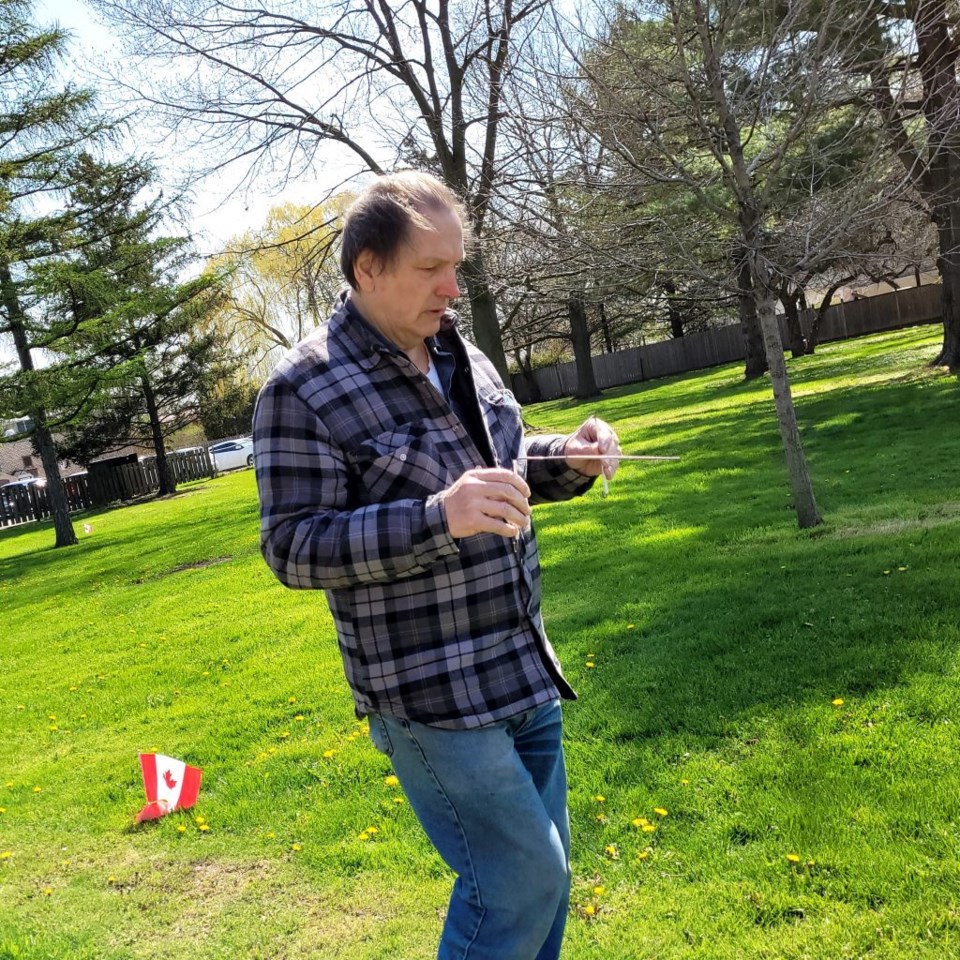
Howard Bogusat had not tried dowsing for several years when he decided to see what he would find in the Negro Burial Ground.
He had heard about the project undertaken by James Russell to locate the graves of those buried in the cemetery, recently renamed the Niagara Baptist Church Burial Ground, using ground-penetrating radar, and he wanted to see how dowsing, once the only method to tell what lies below the ground, would measure up. Residents passing by might have wondered what he was up to, walking slowly in a grid across the cemetery, much as a technician with ground-penetrating radar would do days afterwards.
He explains he first became interested in dowsing about 50 years ago, in his 20s, when he saw a member of town staff trying to find a water line at the corner of Dorchester and Mary Streets. It was a common practice at the time, and is still used in some countries to find water. Dowsing is most commonly associated with the search for underground water, and at one time, the only way to find it, short of digging, says Bogusat.
He says he spoke to the town employee about what he was doing, and then decided to try it himself. He then went home and practised looking for the septic tank, and was impressed with the way the rods he was using crossed over.
Bogusat says that was the end of his dowsing attempts for about 30 years, when he had a plugged eavestrough and wanted to find the end of a blocked water line. He built the dowsing rods and went to work, finding what he was looking for — the place where the water line was filled with dirt.
“I decided I wanted to learn more about it, and I started going to weekend seminars. I found there was a dowsing society in Toronto, and learned it could also be used to find human remains.” Just to test out the theory, he says, he went to Christ Church McNab Cemetery — a spot he thought he could experiment without people watching him — and found, as he walked across each grave, it worked. However, he admits in that case he had the gravestones behind him.
When he read about Russell’s project, he called him and told him what he planned to do. “You do what?” Russell said, but he was willing to compare results, and Steve Watson, the expert searching for graves with ground-penetrating radar, said he believes in the practice of dowsing, which Bogusat was pleased to hear — those who are interested in science are not typically open to dowsing as a valid tool for finding what lies beneath the ground, he says.
Dowsing, also called divining, is described as the ancient practice of holding twigs or metal rods that are supposed to move in response to hidden objects. It is often used to look for water or metal, and sometimes, graves. However it has not been shown to work in controlled scientific tests. What is at play, scientists say, is “ideomotor movements” — caused by subconscious mental activity.
Bogusat was having fun testing his confidence in dowsing, but knew the proof would be in how his discoveries match up with the radar report — the preliminary information was looking like his dowsing indicated several more graves than the radar picked up.
Whatever is making the L-shaped wires move in his hands, which hold onto a straw that each wire sits in, he likes to think they are reacting to what is below the ground. It’s important, he says, to relax, and visualize what you’re looking for. He believes everyone has the ability to dowse, “but not everyone is open to it.” He calls it a body-earth connection, and “it’s a matter of being open to that connection."